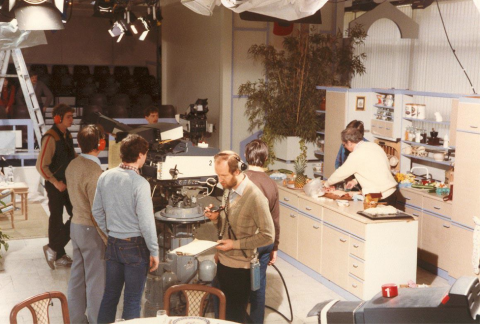Schedule A and the O.B. Mafia
One of the results of the BBC at one time being part of the Civil Service, was its adoption of a lot of the terms and conditions of service that were current at that time. Things like a generous pension scheme, retirement at 60, good holiday entitlements, and good allowances for people working away from their normal base. Whenever the BBC managers tried to change any of this, the Union would generally put it to dispute and status quo would prevail, such was the power of Unions before Mrs Thatcher, that more often than not things didn’t change much.
My understanding was that Schedule A allowances were convenient for the BBC, as it enabled them to save on the administration of booking people into hotels and arranging transport, for staff manning outside broadcasts. Basically the staff themselves undertook booking Hotels/Guest houses and arranging their own transport to the appropriate venue. In some ways I personally think this was a bit of a cop out by BBC managers, but for the staff involved it could be quite lucrative if they “worked the system”. The net result of this was that those on the O.B. rotation defended their position in staying in this privileged position quite vigorously. Some of the arguments in favour were perfectly valid, e.g. CMCR9 had different cameras to the studio, so those not having been on O.B.s would not be familiar with them. On the other hand it maintained the exclusivity, with no opportunity for engineers not on the rotation to gain that experience. As scanners were tight for space anyway it would be difficult to have a supernumerary engineer to gain experience, and the team needed to work well together as most O.B.s were quite pressured. Thus the exclusive nature earned the team the nick name “Scanner Mafia” or just “Mafia” for short.
I don’t remember who first coined the term, probably either John Kimberly or Mike Lee, but both used it regularly, as did a number of other engineers who were not part of what at face value seemed to be an exclusive club. People did break into it over the years, and I myself had 2 periods working on O.B.s, but the first was not until we were using another scanner equipped with EMI 2001 cameras. My second period was with the then new type 5 scanner with Link cameras shortly before I left operations to join engineering services where I remained for the rest of my career.
Schedule A used properly enabled one to stay in approx 3 star accommodation, and covered costs of reasonable quality restaurants for additional meals. In theory if one overspent slightly in one place, that would be compensated by underspend in another. In practice, many engineers chose to stay in the cheapest accommodation possible, go to cheap burger bars or restaurants, and pocket the not inconsiderable difference as a tax free lump sum. Additionally those living some distance from base, but on the right side for the O.B. engaged in what was colloquially known as a “flyer”. They stayed in their own home, travelled to and from the O.B. site each day, and claimed Schedule A as if they had stayed on location and as a result profited very nicely thank you. It is reckoned that some engineers almost doubled their take home pay in this way. Certainly a strong incentive for the group to maintain the status quo. The management knew it was happening but turned a blind eye as challenging it would almost certainly have triggered a union dispute.
A few years later, it became necessary to submit receipts to show that there had been expenses of the kind that Schedule A allowances were intended to defray. That came in at about the time that I had around 3 months working with O.B.s. Even so without even trying I ended up better off by a good amount. On the whole the Schedule A allowance was quite generous although it has to be said that certain expensive locations would more than use it up. In those cases it was quite often agreed to take actuality payments, although those were strictly receipts only, and any expenses for which there was no receipt (like beer down the local pub), had to be waived. Nevertheless the O.B. crew did very nicely out of it for the most part, to the great envy of those who were working in the studio, and not on the rotation.
Ray Lee
The following comment was left on the Pebble Mill Facebook group:
Pete Simpkin: ‘Fascinating the world of OB expenses. I recall in my early days being the engineer for coverage of a three day cricket match.This involved three nights away because I could not drive the vehicle back to base after the whole day duty at the last day of the match. One of the jobs I was required to do there was to tape a half hour ‘audition commentary’ in one of the periods we were not on air with the regular commentators. In those days you had to fill in a recording form which went with the tape and a copy was carbonned for Accounts. I happened to not tick an obscure box marked ‘shared’ on this form so it looked as if I had travelled the 60 miles to the location and stayed three overnights away just for a 30 minute recording! Some weeks later I was hauled up before someone in Accounts as the operation as documented was ‘not very economical’!!’




